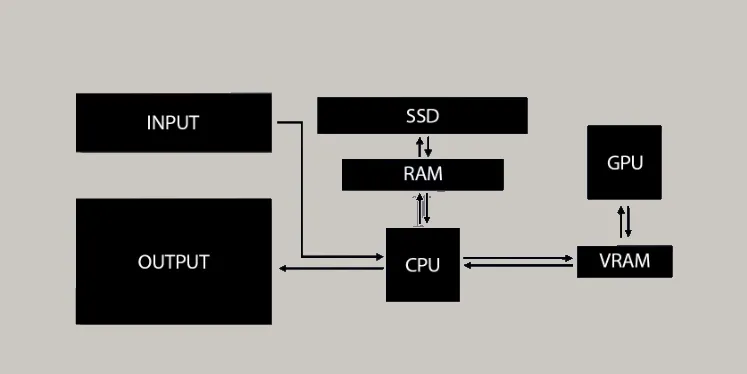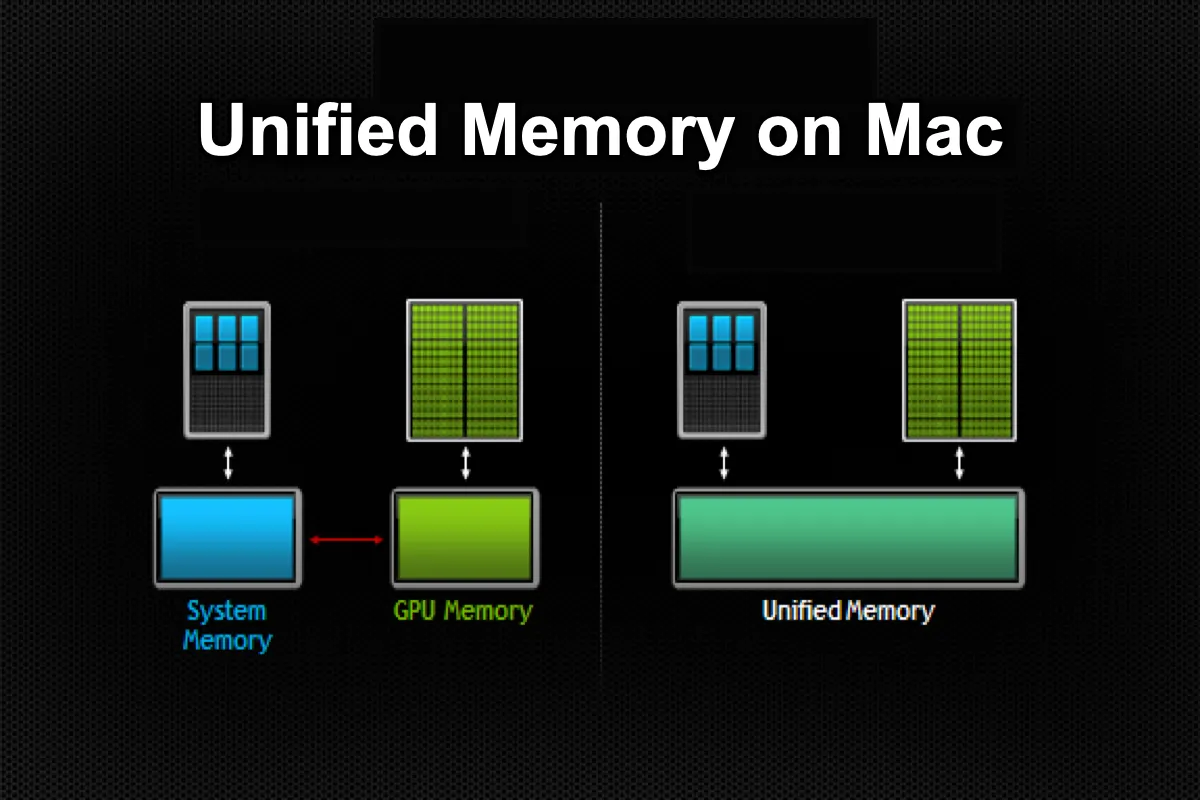The release of the M1 chip brings the first use of unified memory architecture on the Apple Silicon Mac. With it, Apple boosts the higher performance of the Mac with less RAM. You can get the answer to what is unified memory, is unified memory the same as RAM on Mac in this post.
Meanwhile, if you want to experience unified memory, suggestions on how much unified memory you need are included also.
Share this reference article with others right now!
RAM vs VRAM
Before figuring out the concept of unified memory, let's have a look at how the RAM and VRAM work on Mac.
RAM, the abbreviation of Random Access Memory, is used by the CPU to store the temporary applications and processes that are currently running on your device, different from visual memory. VRAM is known as Video RAM, which is the RAM specifically used by GPU to store image data for a computer display.
CPU and GPU always store and access data in their own RAM, and they also cooperate to make your Mac work smoothly. The traditional work style of the RAM and VRAM includes several memory actions, which makes Mac work inefficiently, and that's why unified memory comes out in 2021.

What is unified memory and how does it work on Mac?
Unified memory is a large memory pool combing RAM and a hard drive, trying to minimize the redundancy of data stored between different memory operations by CPU and GPU.
Meanwhile, the CPU and GPU both had their own memory pools, unified memory now makes it possible for CPU and GPU to store and access data in the same memory pool, thus there are fewer repetitive memory operations.
Unified memory enables all components on Mac can access the memory pool directly, making it faster to transfer data between the memory and processor. Meanwhile, the RAM is much closer to the processor physically, thus, the processor can access the data faster if needed.
Think this article helpful? Then share it on your social platform now!
Is unified memory the same as RAM?
When comes to unified memory vs. RAM, both CPU and GPU have their RAM. When needed, CPU and GPU access their own memory pool to support your device functioning properly. When the CPU cooperates with the GPU, they need to store or access the current data in their own memory pool several times, which is dispensable and time-wasting.
While unified memory is a shared memory pool, and every procedure and process can access it at the same time. Also, the current data will not be stored twice by the CPU or GPU, which really improves the performance and running speed on Mac.
How Much Unified Memory Do You Need?
Now that you have known the unified memory from the overview point, you can consider how much unified memory you need.
The unified memory sizes on Mac include 8GB, 16GB, 32GB, 64GB, and 128GB. If you are an average user running Safari, Mail, Photos, and the apps in Apple's iWork suite, an Apple Silicon Mac with 8 GB is probably sufficient, although $200 isn't that much more to pay for 16 GB.
If you are professional personnel working with photos, audio, or video, a Mac with 16GB or 32GB unified memory likely be more appropriate, and the larger the files you work with, the more memory you may need.
Only those with the highest performance demands, such as a professional video editor working with 8K video or data scientist, should consider a Mac with 64GB or 128GB—unless you really have that demand.
Conclusion
The CPU and GPU both have their separate RAM, which slows down the Mac in performance and efficiency. With the appearance of unified memory in Apple Silicon Mac, the performance and running speed of the Mac are greatly improved, because the unified memory reduces the possibility of repeating to store the same data of procedure in running.
If you're interested in unified memory, buy an Apple Silicon Mac to experience it now. If you're puzzled about whether you should buy Mac with an M1 chip or an M2 chip, read Mac M1 vs M2 to make a wise decision.
Share the unified memory with others!
FAQ about unified memory on Mac
- QWhat means unified memory?
-
A
Unified memory is a modern memory technology that combines RAM and a hard drive into a single memory pool. This newer approach, developed by Apple Inc., is thought to improve computing efficiency and energy consumption, usually coming at a premium.
- QIs 8GB unified memory enough for use?
-
A
Actually, if you're an average user running Safari, Mail, Photos, and the apps in Apple's iWork suite, 8 GB of unified memory is probably sufficient. If you're personnel work with photos, video, and audio, 16 GB or 32GB unified memory may be more appropriate. But if you're a data scientist or professional video editor working with 8K video, 64Gb or 128Gb is a must.
